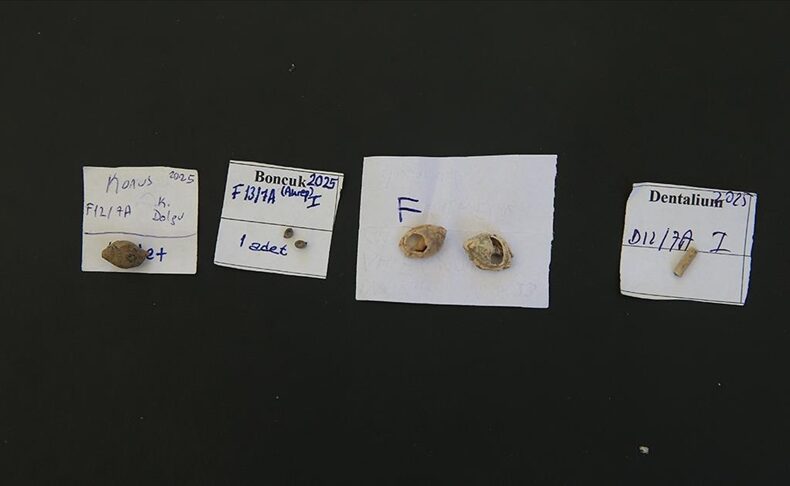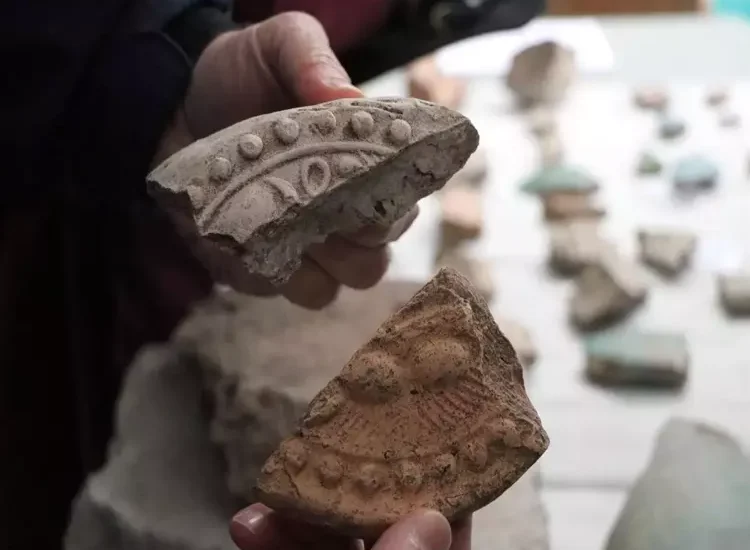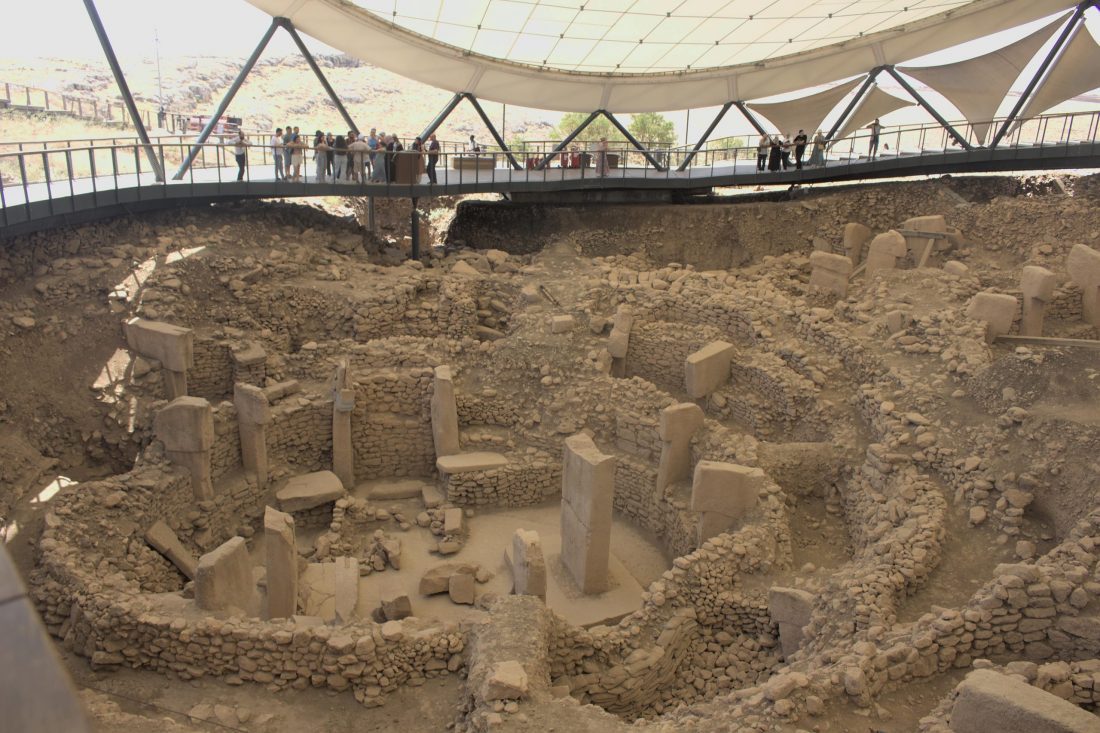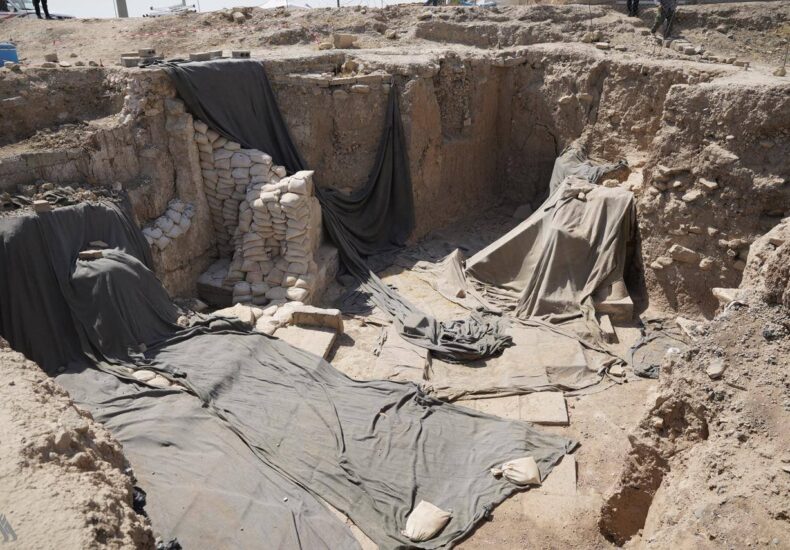
13,000-Year-Old Beads Unearthed in Direkli Cave Reveal Origins of Aesthetic Culture in Anatolia
Archaeologists in Kahramanmaraş, Türkiye, have uncovered dozens of Epipaleolithic beads dated between 9,500 and 14,000 BCE at Direkli Cave. The discovery highlights the region’s role as a crossroads of cultural exchange and artistic expression. Located in the Onikişubat district of Kahramanmaraş, the Direkli Cave has once again yielded remarkable finds that shed light on prehistoric

Excavations at Aizanoi Reveal New Finds in the 2,000-Year-Old Temple of Zeus
Archaeological work in the ancient city of Aizanoi in Çavdarhisar, Kütahya, has brought to light previously buried architectural remains of the world-famous Temple of Zeus. The excavations also uncovered Byzantine-era burials within the sanctuary’s grounds. In western Türkiye’s Kütahya province, the ancient city of Aizanoi continues to yield new discoveries. Recent excavations around the iconic

Mongol Palace of Hulagu Khan Unearthed in Van: A Roof Tile Sparked the Discovery
A simple roof tile found in a field two decades ago has led to one of the most remarkable international archaeological discoveries in recent years. Excavations in Hanköy, a rural village in Türkiye’s Van province, have revealed the remains of a palace and settlement linked to Hulagu Khan, the founder of the Ilkhanate and grandson

Göbeklitepe Exhibition to Open in Berlin’s Museum Island with 96 Artifacts in 2026
Türkiye’s Ministry of Culture and Tourism has announced that Göbeklitepe, one of the world’s most iconic Neolithic sites and a UNESCO World Heritage property, will be presented in a major international exhibition in Germany. Deputy Minister Gökhan Yazgı confirmed that “Myths in Stone: Göbeklitepe and the World of the Last Hunters” will open in February

11th-Century Graves Unearthed in Kayseri’s Monumental Roman Mosaic Villa
Archaeologists excavating in İncesu, Kayseri, have uncovered children’s and adult burials dating to the 11th century within Central Anatolia’s largest Roman mosaic site. The discovery shows that a villa first built in the 3rd–4th centuries CE remained in use until the medieval period. Excavations in Örenşehir, İncesu district of Kayseri, have revealed a striking overlap

Japanese Princess Akiko Launches Excavations at Ayanlar Höyük: Türkiye–Japan Partnership Expands the Taş Tepeler Project
A new chapter has opened in Şanlıurfa’s prehistoric landscape. As part of Türkiye’s landmark Taş Tepeler Project—one of the most ambitious archaeological initiatives in the country’s history—excavations have officially begun at Ayanlar Höyük. The opening ceremony was marked by the symbolic first strike of the shovel by Türkiye’s Minister of Culture and Tourism Mehmet Nuri

Ancient Etruscan Tombs Go Digital: 280 Burial Chambers Now Accessible Online
A groundbreaking digital initiative has opened the doors of Italy’s Etruscan world to a global audience. Researchers from the University of Gothenburg and the Swedish Institute in Rome have created an online platform where nearly 280 Etruscan chamber tombs, dating back 2,500 years, can now be studied and explored virtually. From Excavations to Digital Archives

Ayvalık: Forgotten Gateway Linking Anatolia and Europe in the Ice Age
A new archaeological study has placed the coastal town of Ayvalık, Türkiye, at the center of a story far older than its olive groves or islands suggest. Published in the Journal of Island and Coastal Archaeology, the research reveals that early humans may have reached Europe not only through the Balkans or the Levant, but

2,200-Year-Old Pantry and Kitchen Unearthed in Ancient City of Timbriada, Türkiye
Archaeologists excavating the ancient city of Timbriada in Isparta’s Aksu district have uncovered a pantry and kitchen complex dating back 2,200 years. The discovery, located near the city’s church, sheds light on food storage, agricultural practices, and religious life during Late Antiquity. The excavation of the Timbriada Ancient City, founded on the slopes of Asartepe

World’s Largest Assyrian Lamassu Unearthed at Nineveh’s Nabi Yunus Site
Archaeologists in Iraq have announced the discovery of a colossal Assyrian winged bull in Mosul, measuring nearly six meters in height—making it the largest lamassu ever documented. The statue, dating to the reign of King Esarhaddon (681–669 BCE), was uncovered within the throne hall of his royal palace at Nineveh, one of the empire’s most
